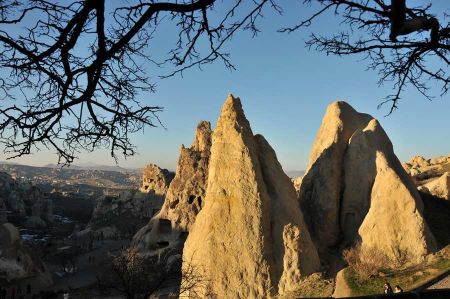Stopover in Göreme - fairy chimneys and hot air balloons
- Written by Portal Editor
After a few years, acquaintances that arose during the Travel Turkey trade fair in Izmir led us to travel again to Cappadocia, this incredibly fascinating landscape that has been shaped over thousands of years by volcanoes, soil erosion and erosion in the interaction of the natural forces of water and wind were created.
The landscape has been a UNESCO World Heritage Site since 1985
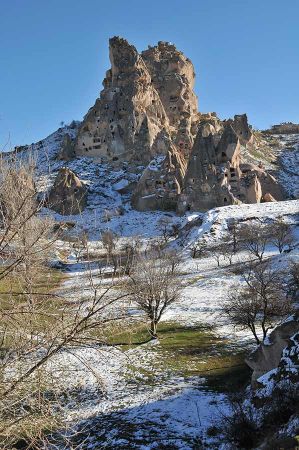 Tuff rock of varying hardness, as ejecta from the surrounding volcanoes Erciyes, Baba Dag and Karadag, forms the basis for this landscape.
Tuff rock of varying hardness, as ejecta from the surrounding volcanoes Erciyes, Baba Dag and Karadag, forms the basis for this landscape.
The destination of this trip is the town of Göreme in Cappadocia, which is so well known not only because of its nature as a national park of tuff stone houses and rock churches with the still preserved wall and ceiling paintings as monuments to Christians from Roman and Byzantine times who once settled here, but since 1985 is also a UNESCO World Heritage Site.
As soon as you enter the city of Nevşehir, the landscape begins to change from the dry plateau to indescribable rock formations, tuff rock formations, some of which were hollowed out by the settlers and are now described as "fairy chimneys".
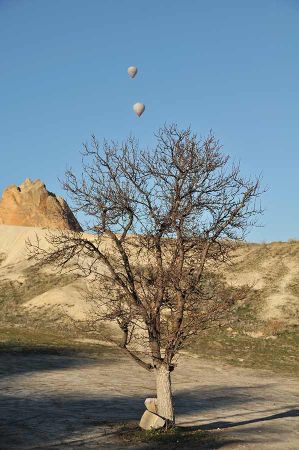 Nevşehir is a relatively young city with around 90,000 inhabitants today, which was called Muşkara during the Ottoman era and only became the focus of public interest as the birthplace of the grand vizier and son-in-law of Sultan Ahmet III, Damat Ibrahim Pasha (1660 -1730).
Nevşehir is a relatively young city with around 90,000 inhabitants today, which was called Muşkara during the Ottoman era and only became the focus of public interest as the birthplace of the grand vizier and son-in-law of Sultan Ahmet III, Damat Ibrahim Pasha (1660 -1730).
Muskara was a village of no more than 18 houses until the Grand Vizier gave it his attention.
Damat Ibrahim Pasha had mosques, fountains, madrassas, baths, caravanserais, schools and soup kitchens built, so that the town grew quickly. He also came up with the new name: Nevşehir (from the Persian Nou-Shahr for New City).
After the completion of the Ibrahim Pasha Mosque
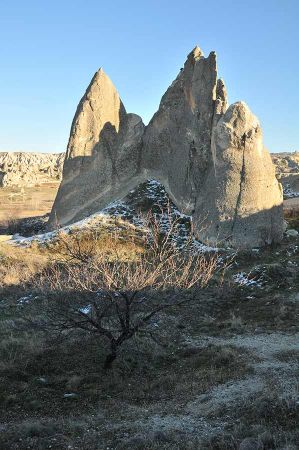 Worth seeing is the Ibrahim Pasha Mosque, which was built by Sarkis Kalfa, an Armenian architect in 1724. Sarkis Kalfa had made a name for himself in the field of sacred buildings after he rebuilt the Patriarchate Church in Constantinople, which burned down on July 6, 1718, together with Araboglu Haci Melidon Kalfa. After the Ibrahim Pasha Mosque was completed, Sarkis Kalfa renovated the Surp Garabed Church of Scutari from 1727, and from 1731 he rebuilt the Surp Krikor Lussavoritsch Church that burned down in Galata. He died in 1740.
Worth seeing is the Ibrahim Pasha Mosque, which was built by Sarkis Kalfa, an Armenian architect in 1724. Sarkis Kalfa had made a name for himself in the field of sacred buildings after he rebuilt the Patriarchate Church in Constantinople, which burned down on July 6, 1718, together with Araboglu Haci Melidon Kalfa. After the Ibrahim Pasha Mosque was completed, Sarkis Kalfa renovated the Surp Garabed Church of Scutari from 1727, and from 1731 he rebuilt the Surp Krikor Lussavoritsch Church that burned down in Galata. He died in 1740.
We then first pass the town of Üchisar, where there is a multi-story "residential complex" from ancient times. Göreme, our destination, was called Matiana in Byzantine times. The first Christians to settle here used the place, on the one hand, to be able to lead a devout, Christian religious life in seclusion, but on the other hand, and above all, as a hiding place from their religious enemies (Persians, Romans, Arabs, Mongols...). They not only “built” churches and chapels that were carved deep into the rock, but also entire residential complexes for several thousand people.
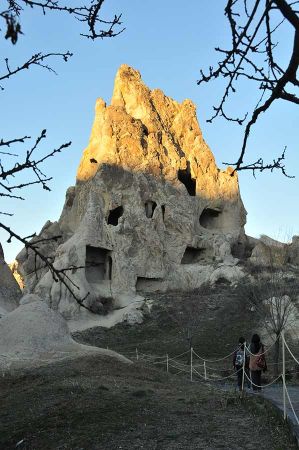 City-like cave structures up to ten stories deep in the tuff rock have also become known, with facilities such as kitchens, storage rooms, bedrooms and animal stables, including the absolutely necessary ventilation shafts, which ensured reasonably comfortable and safe living conditions, as their entrances could be blocked with large millstone-like stones.
City-like cave structures up to ten stories deep in the tuff rock have also become known, with facilities such as kitchens, storage rooms, bedrooms and animal stables, including the absolutely necessary ventilation shafts, which ensured reasonably comfortable and safe living conditions, as their entrances could be blocked with large millstone-like stones.
As already mentioned, a large open-air museum of these unique tuff stone houses has been set up in the town of Göreme, which, in addition to the churches with all the religious ceiling and wall paintings, also shows the excellent craftsmanship of the stonemasons. Some of the ancient houses are also open to visitors for viewing. In addition to being relatively easy to work with, tuff rock has some advantages in terms of weather that were already known back then: it keeps you cool in summer and doesn't cool down as much in winter. An advantage that some people are taking advantage of again today and continue to use the ancient tuff stone houses as living space.
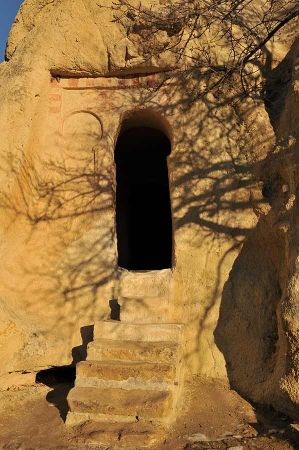 In the course of the so-called population exchange in 1923 and 1924, the last residents left the town of Göreme; the town was only slowly repopulated in connection with the emergence of tourism, which led, among other things, to the discovery of a St. John the Baptist monument in 1957. Church led.
In the course of the so-called population exchange in 1923 and 1924, the last residents left the town of Göreme; the town was only slowly repopulated in connection with the emergence of tourism, which led, among other things, to the discovery of a St. John the Baptist monument in 1957. Church led.
There are now some good hotels in Göreme and the surrounding area, as well as the first camping sites, because in addition to the attraction of balloon flying, the wonderful landscape of Cappadocia is also being discovered by tourists and used for gentle tourism. There are hikes and tours for mountain bikers, which are also offered as multi-day packages.
38° 37′ 35″ N, 34° 42′ 50″ E Nevşehir
38° 38′ 35″ N, 34° 49′ 45″ E Göreme
Please read as well:
Fendt-Caravan – a dream comes true – “Work” and “Connect”
Nepomuk – not just a well-known dragon that no one wants
https://www.alaturka.info/en/turkey-country/centralanatolia/6321-stopover-in-goereme-fairy-chimneys-and-hot-air-balloons#sigProId08c541e0ff
